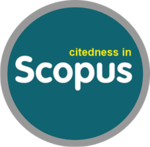Plagiarism Issues
Statement and policy
All of the articles submitted to Al Ahkam will be screened for plagiarism using plagiarism detection tools (Turnitin). Al Ahkam Journal will immediately reject papers leading to plagiarism or self-plagiarism.
Before submitting articles to reviewers, those are first checked for similarity/plagiarism tool, by a member of the editorial team. The papers submitted to ADLIYA must have a similarity level of less than 20%.
Plagiarism is the exposure of another person’s thoughts or words as though they were your own, without permission, credit, or acknowledgment, or because of failing to cite the sources properly. Plagiarism can take diverse forms, from literal copying to paraphrasing the work of another. In order to properly judge whether an author has plagiarized, we emphasize the following possible situations:
- An author can literally copy another author’s work- by copying word by word, in whole or in part, without permission, acknowledge or citing the original source. This practice can be identified by comparing the original source and the manuscript/work that is suspected of plagiarism.
- Substantial copying implies an author reproduces a substantial part of another author, without permission, acknowledgment, or citation. The substantial term can be understood both in terms of quality as quantity, is often used in the context of Intellectual property. Quality refers to the relative value of the copied text in proportion to the work as a whole.
- Paraphrasing involves taking ideas, words, or phrases from a source and crafting them into new sentences within the writing. This practice becomes unethical when the author does not properly cite or does not acknowledge the original work/author. This form of plagiarism is the more difficult form to be identified.
- Similarity Index above 40%: Article Rejected (due to poor citation and/or poor paraphrasing, article outright rejected, NO RESUBMISSION accepted).
- Similarity Index (20-40%): Send to the author for improvement (provide correct citations to all places of similarity and do good paraphrasing even if the citation is provided).
- Similarity index Less than 20%: Accepted or citation improvement may be required (proper citations must be provided to all outsourced texts).
In cases 2 and 3: The authors should revise the article carefully, add required citations, and do good paraphrasing to outsourced text. And resubmit the article with a new Turnitin report showing NO PLAGIARISM and similarity less than maximum 20%.











